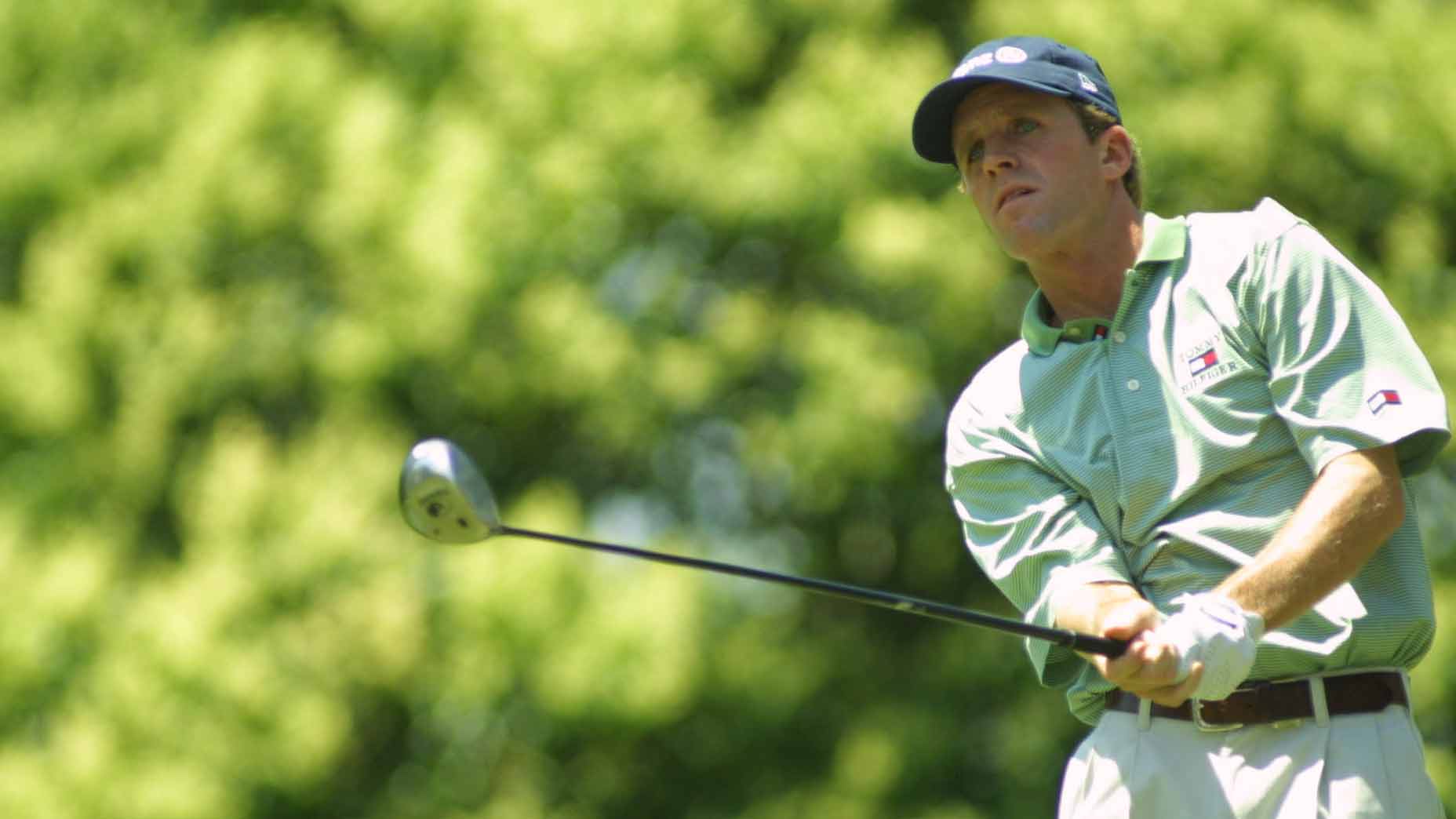Big, beefy Bryson DeChambeau is threatening to overwhelm the PGA Tour with his booming drives, having increased his driving distance this season by 20.5 yards, to an average of 323.0.
This eye-popping improvement has stirred memories of another brawny bruiser who once similarly rocked the Tour — Brett Quigley. In 2001, the 5-foot-11 (in spikes), 160-lb. (holding a Big Gulp) Quigley picked up 22.1 yards, finishing second in the driving distance stats at 298.5, behind only legendary ball-basher Long John Daly (306.7) and one spot ahead of Tiger Woods.
Recently, Quigley reminisced about his unlikely metamorphosis. “It was definitely good for the ego,” he says. “And it made the game a lot easier. For a Tour player, a bad 8-iron is, what, hitting it to 20 feet? That’s a good 5-iron.”
Indeed, in 2001 Quigley recorded six top-10 finishes, more than he had in the previous four seasons combined, sparking incredulity over how far the slender, boyish 31-year-old was hitting it. “I remember the guys at Callaway told me they had to build 33 drivers exactly like mine for other players,” Quigley says, “because no one believed I was doing this on my own.”
In fact, he wasn’t — 2001 was the first full season the Pro-V1 was widely available on Tour and many players enjoyed substantial distance gains, with the overall Tour average increasing by a whopping six yards. Quigley married a new model of the Big Bertha with his hot new ball and started swinging for the fences. “The biggest factor was that year was the first time I started hitting up at the ball,” he says. “I teed it up as high as I could and had a really simple swing thought: hit it to the sky.”
All those smashed drives changed the self-image of Quigley, who arrived on Tour in 1997, six years after he graduated South Carolina as an Academic All American. “My first few years I was playing scared,” he says. “When I started swinging away with the driver, it unlocked the rest of my game.”
Quigley never became a star but he made a handsome living on Tour: In 2006, he had 10 top-10s and banked $2.6 million; in ’09, he had a trio of runner-up finishes. Most important, he played the game his way.
Quigley came up when finesse and precision were still the coin of the realm. “Guys were still hitting 1-irons off the tee, there was a lot of laying up to your ‘perfect number,’” Quigley says. “One hole that stands out is the 10th at Wailea, at the Hawaiian Open. It’s a short, tight par-4, usually downwind, and everyone was trying to squeeze 3-irons into the fairway. When you’re a young player on Tour there is a subtle peer pressure to play like everyone else, so I hit 3-iron also, even though I was thinking, Why the heck am I not ripping a driver down by the green? I finally learned to trust it.”
Like everyone else, Quigley has been transfixed as DeChambeau has refashioned the game into his own hulking image. He dismisses any traditionalist concerns that Bryson is making a mockery of proud golf courses with his thunderous drives. “I love watching him making birdies, I love seeing things that once seemed really impossible,” Quigley says.
But he does offer a cautionary tale. In 2001, as Quigley was giving chase in the driving distance battle, Daly became ever more reckless. When a player becomes defined by power, throttling back can stop being an option. “Watching John Daly, it felt like he had a lot of pressure to hit driver on every single hole,” Quigley says. “I remember him pulling an iron on the tee and people actually booed.”
DeChambeau is certainly more cerebral than Wild Thing but he has suddenly discovered that being the longest hitter in golf is a helluva drug. Quigley can almost relate.
“Ultimately, what matters most is your score,” he says. “But when you really nail one, and fans are oohing and aahing on the tee box, and then you walk down the fairway, past your playing partners and just keep walking … I mean, c’mon, who doesn’t love that?”
